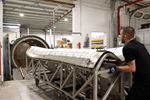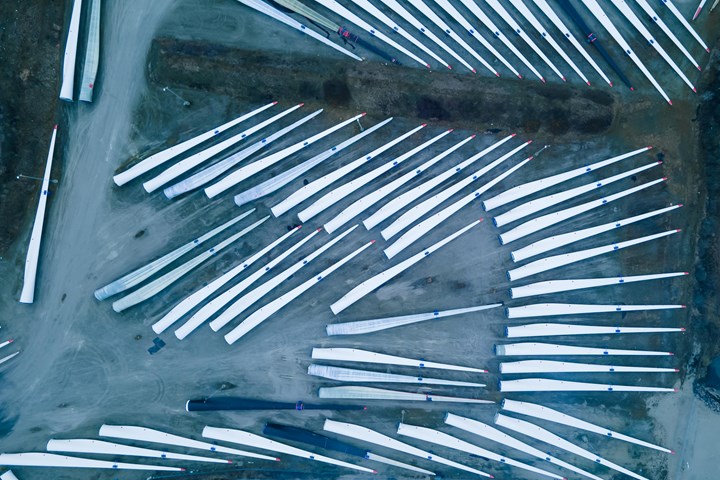RewAir chooses Plataine to optimize wind turbine blade production lines
Plataine’s AI-based solution provides flexible optimization of primary production lines while reducing operational costs and carbon footprint.
RewAir (RewAir) is a global provider of engineering services to improve the efficiency of composites manufacturing in wind turbine blade production. The company also supplies “value-added structural reinforcement solutions e.g., glass fabric preforms, stacks and kits, auxiliaries such as vacuum consumable kits, and blade and root-end cover” according to its website. Recently, RewAir selected Plataine’s (Waltham, Mass., U.S.) AI-based solution to optimize its wind blades production operations.
According to Plataine, the company will benefit from reduced production costs, improved material use rates and greater flexibility in its quoting and operational processes. Plataine’s AI-based technology was chosen due to the company’s experience at working with the wind energy sector, bringing value to its clients and impacting the bottom line of the business. Plataine also prides itself in offering complete remote implementation and strong after-sales support.
RewAir needed a flexible solution that enabled it to run an optimal production process on a variety of production lines. RewAir production lines operate three primary processes: “cut to package,” “cut to shelf” and a hybrid of the two. The flexibility of Plataine’s manufacturing optimization software was therefore a key consideration. Specifically, Plataine’s FabricOptimizer is said to enable RewAir to optimize mix of material and operational costs for each of its different production lines.
The seamless implementation process at RewAir was conducted entirely remotely. Plataine says its remote deployment option helps to maintain compliance with recent health regulations and reduces downtime during the rollout phase.
“Plataine’s solution matches all our requirements and preferences to give us the most optimal production sequence in our various production lines,” Jens Rewers, CEO of RewAir, emphasizes. “Plataine software runs various scenarios in a short time and offers the optimal cut plan. The result is improved material utilization and efficiency, leading to a significant reduction in costs, as well as increased production flexibility.”
Related Content
-
Adaptive composite elements for building facades exhibited at JEC World 2023
University of Stuttgart institutes use carbon and glass fiber composites, robotic fabrication, biomimetic design and digial twin/control to demonstrate adaptive facade elements for future buildings.
-
DLR develops safe, flexible workspaces for robot-assisted manual draping
The EU project Drapebot works on new ways of collaborating with industrial robots for manual CFRP preforming for large aircraft structural parts.
-
Plant tour: Sekisui Aerospace, Orange City, Iowa, Renton and Sumner, Wash., U.S.
Veteran composites sites use kaizen and innovation culture to expand thermoplastic serial production, 4.0 digitization and new technology for diversified new markets.
















